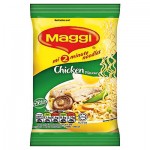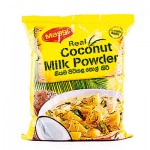Beyond STPP – Mental Filing System
View(s): In one of the previous articles, I explained the need of having an additional P which makes an extended version of STP. The need of having Profiling was highlighted in the process of positioning a brand. Needless to mention positioning is in the minds of the consumers or rather it’s created in the minds of the consumers. As you may know, positioning is about an image that is created in the minds of the target consumers about a brand.
In one of the previous articles, I explained the need of having an additional P which makes an extended version of STP. The need of having Profiling was highlighted in the process of positioning a brand. Needless to mention positioning is in the minds of the consumers or rather it’s created in the minds of the consumers. As you may know, positioning is about an image that is created in the minds of the target consumers about a brand.
It’s noteworthy that the same image of the same brand may not get created in the mind of a consumer who is not in the target market. Hence, having a proper Segmentation of the market is a pre-requisite for a successful positioning attempt.
As Michael Porter once mentioned; “you can’t be all things to all people. Strategy is to be deliberately different”. He also mentioned the fact that strategy is about trade-offs as the strategist would choose one over the other alternative to pursue a goal. Applying the same in branding which is the strategic aspect of Marketing; what needs to be understood is that; positioning is also about choosing a direction and it is also about trade-offs. It’s about choosing one aspect of the brand to create an image of the brand and letting go of many other alternative ways of creating the image of the brand.
 Brand USP and positioning
Brand USP and positioning
Out of all the possible ways of positioning a brand, one direction is chosen to create an association in the minds of the consumers about a brand which is also known as the brand USP (Unique Selling Proposition).
Why it’s considered strategic is that; once chosen, it wouldn’t be changed in the short run unless there is a compelling reasons. This is considered under brand identity where the identity is created for the brand which will later on be perceived by consumers as they interact with the brand. Velvet of Hemas as a soap brand which was positioned for softer skin didn’t change it for decades and in the end the same could become the market leader after 20 years of launching.
 A toothpaste brand (Clogard) which spoke of the protection of clove oil didn’t change the proposition for decades and today it’s a trusted brand in the market for oral care which has challenged multinational brands available in Sri Lanka. Therefore, brand USP should be taken as an integral part of positioning and also as a long term asset of the brand.
A toothpaste brand (Clogard) which spoke of the protection of clove oil didn’t change the proposition for decades and today it’s a trusted brand in the market for oral care which has challenged multinational brands available in Sri Lanka. Therefore, brand USP should be taken as an integral part of positioning and also as a long term asset of the brand.
Where do we position brands?
 As mentioned earlier; brands are positioned in the mind. In brand marketing, the mind of the consumer or anyone for that matter is considered to be a file cupboard. It’s more or less equated to a system where; each need has a separate file. For instance, for hunger there may be one folder inside which there can be many sub folders or files which are allocated for each want when it comes to food. There could be a file for chocolate, and one for biscuits, for tea, for milk, for yoghurt, for noodles, for jam and for chicken and for fast food etc. There may be a few brands which are already registered in the file of chocolate; amongst them there may be brands such as; Ferrero Rocher, Cadbury, Ritzbury, Toblerone, Ghirardelli, Guylian, Mars, Godiva, Hershey, Kit-Kat etc… At any given point of time, if there is a craving to have a chocolate, you would try to search through the files to find the brand you want. If the regular brand you want is not available, you would look for the next best in your files and may try to find it.
As mentioned earlier; brands are positioned in the mind. In brand marketing, the mind of the consumer or anyone for that matter is considered to be a file cupboard. It’s more or less equated to a system where; each need has a separate file. For instance, for hunger there may be one folder inside which there can be many sub folders or files which are allocated for each want when it comes to food. There could be a file for chocolate, and one for biscuits, for tea, for milk, for yoghurt, for noodles, for jam and for chicken and for fast food etc. There may be a few brands which are already registered in the file of chocolate; amongst them there may be brands such as; Ferrero Rocher, Cadbury, Ritzbury, Toblerone, Ghirardelli, Guylian, Mars, Godiva, Hershey, Kit-Kat etc… At any given point of time, if there is a craving to have a chocolate, you would try to search through the files to find the brand you want. If the regular brand you want is not available, you would look for the next best in your files and may try to find it.
 This process can go on and on until you run short of options. In the end, you would come to the conclusion that; as the brands in my files are not available I would go for something else which may be a new brand or something which has nothing to do with chocolate. As a new brand enters the market, the challenge is to register the new brand in the relevant file which may be referred to as the category. After registering the brand in the relevant file, the next is to come up in the hierarchy so that as the minds starts looking for chocolate, the new brand pops up before any other brands in the file.
This process can go on and on until you run short of options. In the end, you would come to the conclusion that; as the brands in my files are not available I would go for something else which may be a new brand or something which has nothing to do with chocolate. As a new brand enters the market, the challenge is to register the new brand in the relevant file which may be referred to as the category. After registering the brand in the relevant file, the next is to come up in the hierarchy so that as the minds starts looking for chocolate, the new brand pops up before any other brands in the file.
This process which takes place in our minds tells us that brands are positioned in the minds of the consumers not on the shelf.
 What can possibly go wrong in brand extensions (Registering a brand in many files instead of having it in one file)?
What can possibly go wrong in brand extensions (Registering a brand in many files instead of having it in one file)?
Brand extension is an event where the brand which is established in one category utilized to create an image in another category. For example; the brand Maggi was initially created in the noodles category but later the same brand was used to launch Coconut Milk Powder by Nestlé.
In positioning Maggi Noodles, Nestlé used the proposition of Two-minutes to capture the market and it created a lasting impression. But when Maggi was used to launch Coconut Milk Powder, the same proposition was not relevant. But, still it was alright as those two are adjacent categories of which one is an instant food and the other a convenient cooking aid; both offer the consumer convenience.
Coming back to the mental-filing-cupboard and the example of chocolate, imagine a company such as Hettigoda Group, wanting to launch a new Chocolate brand, and it’s Swiss made best chocolate in the world, which is imported by Hettigoda group as a non-related diversification strategy; and thinking of establishing the brand in the mental-filing-cupboard.
At this point of time, the first challenge is to get into the mental file cupboard and then to climb up in the list to be top of mind. This would be a costly affair as creating awareness to consideration and inducing trial would definitely mean big budgets. Not only it costs a lot of money it can also take time and will demand an extra effort. At this point of time, imagine a situation where the Hettigoda group deciding to go ahead with the brand Siddhalepa as it’s a well-known brand…
What would the result be?
Siddhalepa is a trusted brand in the market, and even if it’s the best chocolate in the world they are trying to market, no one would want to try this new chocolate. Reason is that, the filing system of the consumer would say; don’t buy or don’t try as this brand is in the balm file not in the chocolate file.
This was tested once with about 100 respondents asking if they would buy Siddhalepa Chocolate; most of them stated the fact that, they could already feel the bitter taste of balm in the chocolate. By looking at the reasons for this reaction one would think; Siddhalepa is the best brand in the respective category and the chocolate is all the way from Switzerland and why wouldn’t anyone buy or taste it.
What made consumers react in the way they did was; the fact that Siddhalepa is strongly registered in the mental file which accommodates all the brands for pains and aches and balms. Hence, the decision of considering Siddhalepa as a chocolate brand is not something your brain can fathom.
Conclusion:
Some of you may think why the new chocolate would be branded with Siddhalepa or you may already consider it as a mistake. I have observed the same mistake done by local brands in the market as they may not be fully aware of how brands work in the minds of the consumers / people.
Even though it’s obvious that this would be a mistake, there are many brands in the local context which are over-stretched by brand owners as they think it would be a cost-effective approach. But the little they know is that, our mental filing system is much stronger than any brand hence confusing the filing system would never give any good results for those brands. In fact it will weaken the original brand’s appeal to a greater extent.
Therefore, as brand marketers, identifying the right file or the folder to register the brand will be the key to success and messing it up with irrelevant product categories would create a confusion in the minds of the consumers which would not deliver results.


